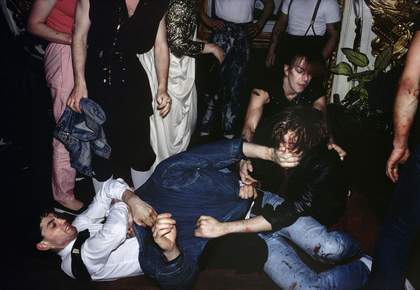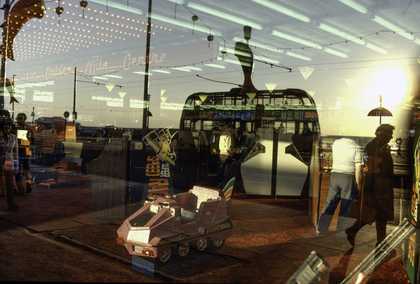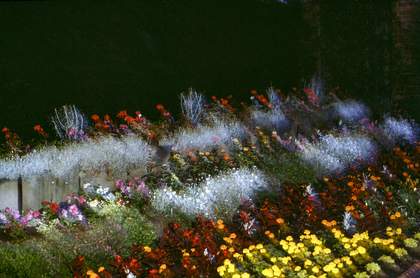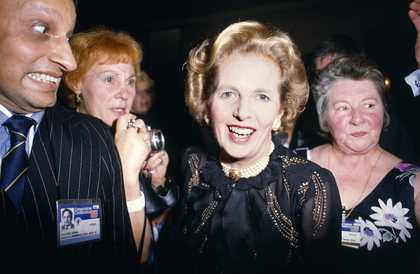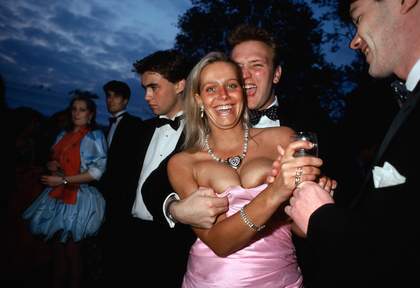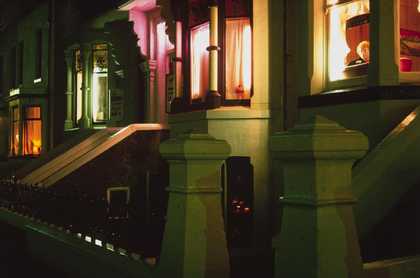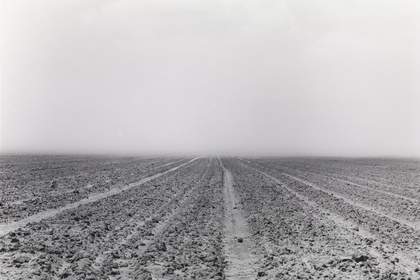
Hypnosis demonstration, Cambridge University Ball
from Chris Steele-Perkins, The Pleasure Principle 1980–9
© Chris Steele-Perkins / Magnum Photos
In my early days as a photographer I shot only in black and white and worked almost exclusively in England, mining different photographic seams in an ongoing examination of this endlessly strange and enigmatic country to which I belong. Then, in the early 1980s, I joined the international cooperative Magnum Photos and started to look at the world outside of Britain. Often I was drawn to conflict zones where the fabric of civil society had been shredded – the kinds of extreme places that were so different from my comfortable middle class experiences. At the request of assigning magazines, I also started to work in colour and I soon came to embrace the medium. Whatever else The Pleasure Principle 1980–9 may have been, it was also my journey into mastering colour.
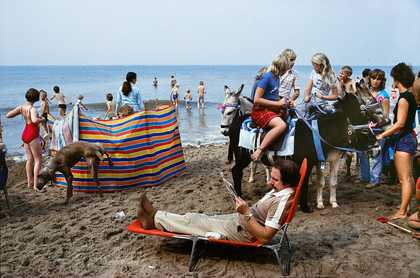
Blackpool beach
from Chris Steele-Perkins, The Pleasure Principle 1980–9
© Chris Steele-Perkins / Magnum Photos
In the 1980s I travelled a lot, but continued to photograph England, now in colour and in a more fluid, open way than I had previously. Perhaps my eyes had been reopened by my experiences in the wider world; the work I had done abroad had had a profound effect on me, and if that had changed how I saw England, my country had changed too. It had become more garish – a brasher, greedier place; a place where society did not exist, according to Maggie Thatcher.
Working on The Pleasure Principle, I had possessed no grand plan other than to take another look at England, an idea that was fed by a bewilderment about identity. Everything I shot was of interest to me; everything was grist to my photographic mill. My attachment to the England of saucy postcards, deviant vicars, cross-dressing dames, surrealist humour and whoopee cushions was tempered by darker undercurrents of violence, racism, greed, loneliness and quiet desperation.
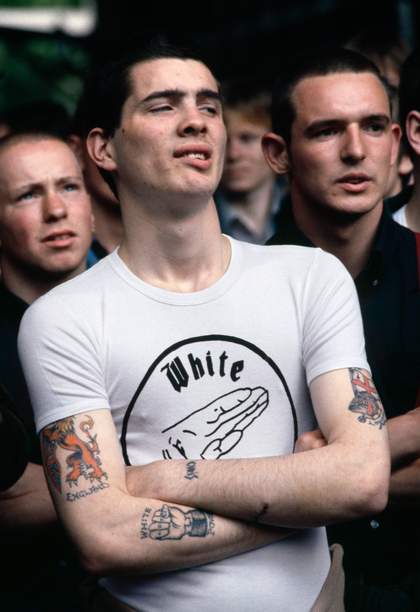
British Movement demonstration, London
from Chris Steele-Perkins, The Pleasure Principle 1980–9
© Chris Steele-Perkins / Magnum Photos
I continue to document England to this day. Who are we? Who am I? How is this country changing? In response to these questions I am photographing migrant families in London, who come from every country in the world, as seen in their homes. These are the new Londoners, the new English, the new British – and my family is one of them. I celebrate that. The national character is in flux, evolving as it ever has done, and we should cherish this, not fear it.
Afterword
I have always felt that my purpose as a photographer was to explore the world and tease out a series of singular photographic encounters, and organise them into a narrative that reflected my experience. The history of photography is primarily this. There is no template – each must travel their course, and I have no wish to tell people how they should respond to my work. The introduction I wrote to The Pleasure Principle book is, really, all I have to say about it.
A total of 47 prints from The Pleasure Principle 1980–9 were purchased by Tate with funds provided by the Photography Acquisitions Committee in 2016.
Chris Steele-Perkins is a British photographer, born in Burma, who has been a member of Magnum Photos since 1979.

